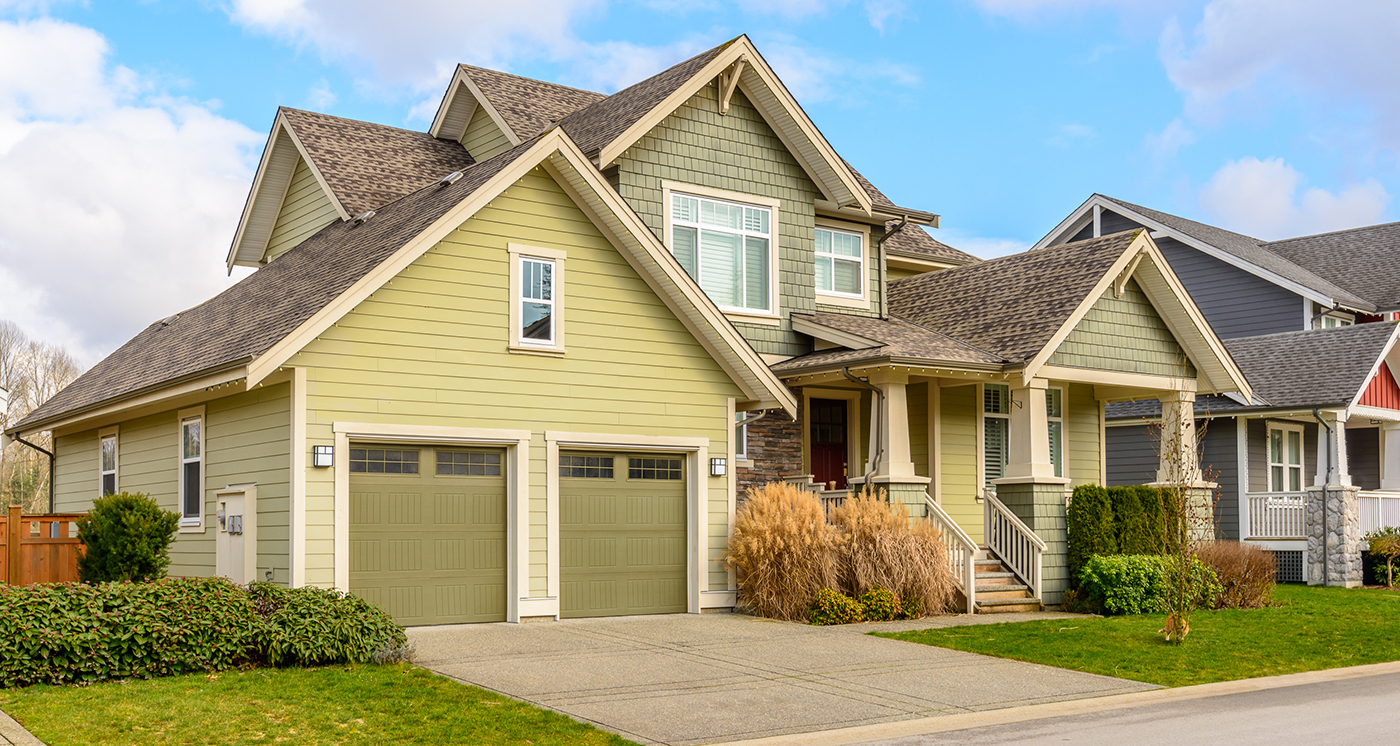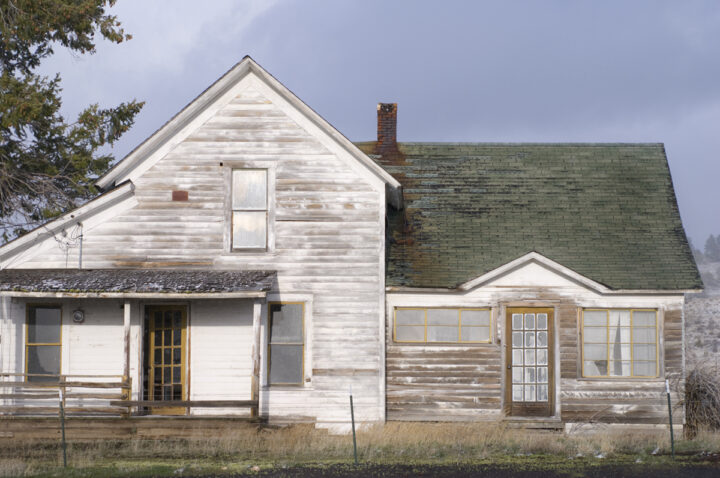What is the Average Time to Sell a House?
The time required to get a home from listing to closing varies depending on the area and the home's characteristics.


Written by Tali Bendzak on August 6, 2025
Homes across the U.S. are selling faster than in years past. In April 2025, homes spent an average of just 16 days on the market before going under contract. After an offer is accepted, home sales typically require an additional 30- to 45- day closing period before they are officially sold. Therefore, the average time it takes to sell a house is 47-62 days in the U.S.
The amount of time it takes to sell a home varies greatly depending on local market conditions, demand and seasonality. September is usually the turning point when home sales begin to slow. However, seasonality trends have been inconsistent in recent years, and mortgage interest rates have created their own “seasonality” because they have a big impact on affordability: When mortgage rates rise, the market tends to cool; when they drop, buyers have come out in droves.
Even with variations, though, the length of time it takes to sell has been decreasing throughout the last decade. For instance, In 2010, the average number of days on the market was 140 days, including the closing period.
And that doesn’t include the time spent thinking about moving before taking action. According to the Zillow Consumer Housing Trends Report 2024, the typical seller thinks about selling for three to four months before ultimately listing their home — plus additional time to consider home repairs and prepare for listing.
What will my house sell for?
The typical home sold in America is a 3-bedroom, 2.5-bathroom house between 2,000 and 2,499 square feet with a price tag of $363,000.
Most sellers (80%) sold a single-family detached house, while townhomes and row houses accounted for 6% of sales and condos/co-ops represented 4% of sales, according to a Zillow survey conducted in 2023.
Average time to sell a house
The average time it takes to sell a home in your area may differ, depending on your local real estate market and location. Historically, rural homes tend to stay on the market longer than urban or suburban homes. And more expensive homes generally take longer to sell.
Zillow tracks the number of days that homes are for sale in major metropolitan areas across the U.S. Of the 100 largest metro areas, here are the markets where homes go under contract the quickest, areas aligned with the national average and the slowest-moving markets. The data is based on the median number of days a typical home in that market moved from listing to pending in April 2025. (Add 30-45 days of escrow time to see roughly how long it takes to close on the sale. The length of time in escrow varies per sale.)
Markets where homes sell the quickest
| Region Name | Typical number of days from listing to pending* |
| Cincinnati, OH | 5 |
| Kansas City, MO | 5 |
| Columbus, OH | 5 |
| St. Louis, MO | 6 |
| Cleveland, OH | 6 |
| Richmond, VA | 6 |
| Hartford, CT | 6 |
| Grand Rapids, MI | 6 |
| Omaha, NE | 6 |
| Dayton, OH | 6 |
| Akron, OH | 6 |
| Syracuse, NY | 6 |
| Toledo, OH | 6 |
| Harrisburg, PA | 6 |
*As of April 30, 2025
Markets where homes sell close to the national average
| Metro | Typical number of days from listing to pending* |
| San Francisco, CA | 15 |
| Des Moines, IA | 15 |
| San Diego, CA | 16 |
| Milwaukee, WI | 16 |
| Tulsa, OK | 16 |
| Columbia, SC | 16 |
| Charlotte, NC | 17 |
| Oxnard, CA | 17 |
| Stockton, CA | 17 |
| Ogden, UT | 17 |
*As of April 30, 2025
Markets where homes sell the slowest
| Region Name | Typical number of days from listing to pending* |
| McAllen, TX | 65 |
| Cape Coral, FL | 61 |
| Miami, FL | 54 |
| North Port, FL | 51 |
| Jacksonville, FL | 46 |
| Deltona, FL | 44 |
| Lakeland, FL | 42 |
| Palm Bay, FL | 38 |
| San Antonio, TX | 36 |
| Little Rock, AR | 35 |
| Austin, TX | 34 |
| New Orleans, LA | 34 |
*As of April 30, 2025
How can I find out the average days on the market for my area?
Your real estate agent can provide insights on your local market about the general pace of sales and how quickly homes similar to yours have sold. If you’d like in-depth data on your specific area, visit Zillow Research Data and find the “Days to Pending” dataset for your area under the “Days on Market and Price Cuts” section.
You can also read or watch the local news for real estate trends, and keep an eye on other listings in your neighborhood. Are they on and off the market quickly, or hosting the same open house weekend after weekend?
How fast can you sell a house?
In the U.S., sellers spend approximately six months preparing their homes for sale, another 16 days with their house on the market, and 30- to 45-days in the closing period.
Timeline for selling a house
There's more to the selling process than just listing your home, waiting for the perfect offer to come in, and closing the deal. After you've done everything to prepare for listing, here are the key milestones of selling, and how long they usually take:
1. List and show (and wait for offers)
If the average length of time an American house sits on the market is 25 days, excluding the standard 30- to 45-day close, that means your home could be on the market for less than a month before you accept an offer.
2. Accept an offer
When you receive an offer, it's courteous to respond as quickly as possible. While actual rules related to response times vary state by state and contract by contract, the buyers submitting the offer will typically include an expiration — 24, 48, or 72 hours after submitting.
3. Home inspection
Again, this all depends on the contract between buyer and seller. Typically, the buyer has between 5 and 10 days after offer acceptance to complete their home inspection. How long does a home inspection take? The process itself takes only a few hours, plus a day or two for the inspector to write up their report. Note that in fast-moving real estate markets, buyers will sometimes waive the inspection to make their offer stand out among other offers.
4. Counteroffer after home inspection
Based on the findings of the home inspection, buyers often present an adjusted offer or request repairs to be completed. This re-negotiation process usually takes 24 to 48 hours. Hopefully, after negotiations, you and the buyer have come to an agreement and the deal can continue.
5. Closing
The average time to close on a house is 30-45 days from the date of mutual acceptance to the day you hand over the keys to the new owner. This gives the buyer's lender, the title company, and the county records department enough time to complete all the necessary paperwork.
If you’re looking to speed up your sale, there are a few good options:
- Have your agent prioritize an early close.
- Select an all-cash offer if available to limit possible financing slowdowns.
Sell a house quickly by avoiding these home selling mistakes
For every house that sells very quickly, there are some that sell much slower. Avoid being the house that sits on the market forever by watching out for these selling mistakes:
Poor marketing
Most sellers want to get their homes in front of as many potential buyers as possible. Listing on the MLS is the best way to do that. Writing a compelling listing description that has excellent photos and allows potential buyers to experience the house online through 3D tours and interactive floor plans can help your home stand out. One way to do that is with Showcase, an immersive experience offered at no cost by select Zillow partners. With Showcase, your listing is more likely to go pending in the first 14 days after being listed compared to similar nearby non-Showcase listings on Zillow*.
Priced too high
If you're not receiving any offers, or if you're receiving only offers that are far under asking price, it's possible that your list price is too high. Pricing your home correctly is a bit of an art form, but there are tools to help you research that perfect number.
One way to get a quick (and free) home value estimate is by checking your home's Zestimate. Even more, if you claim your home on Zillow and provide updated information, you can influence your Zestimate to get a more accurate home valuation price.
Undesirable location
There are plenty of things about your home you can fix, but some things can't be changed — proximity to neighbors or round-the-clock highway noise, for example. You may have become accustomed to these less-than-ideal conditions over the years, but buyers notice. Make sure your home is priced accordingly.
Poor condition of the home
If multiple big-ticket items need repairs, your home is going to be harder to sell, and you're in danger of having a deal fall apart after the inspection. There are a few strategies to consider, like addressing the biggest repairs ahead of time, or lowering the price so that buyers can do improvements on their own.
Lack of curb appeal
How your home looks from the street is crucial, as it's the first impression buyers will have. And, if your home looks bad from the outside, buyers might assume the inside of the home is similarly run down and skip a showing. Take a look at your curb appeal with an objective eye and see if you can make any improvements.
Lack of “online” curb appeal
The first place buyers are likely to see your home is online, so make sure you create a compelling listing that hits all the highlights, and that includes ways for buyers to explore your home in a way that makes them want to view it in person.
Off-season
In the vast majority of the country, spring is the best time to list a house, because the greatest number of buyers are looking. Unsurprisingly, winter is the slowest, because of holidays and bad weather.
Ready for a new address?
Get an instant cash offer or list with a local partner agent.
Explore selling optionsRelated Articles
Sell your home with a winning strategy
Here’s how to maximize your home sale with the right selling plan.

Build a smart selling plan
Talk to your agent about their marketing approach - especially online - to ensure you’re getting the best possible price for your home.


